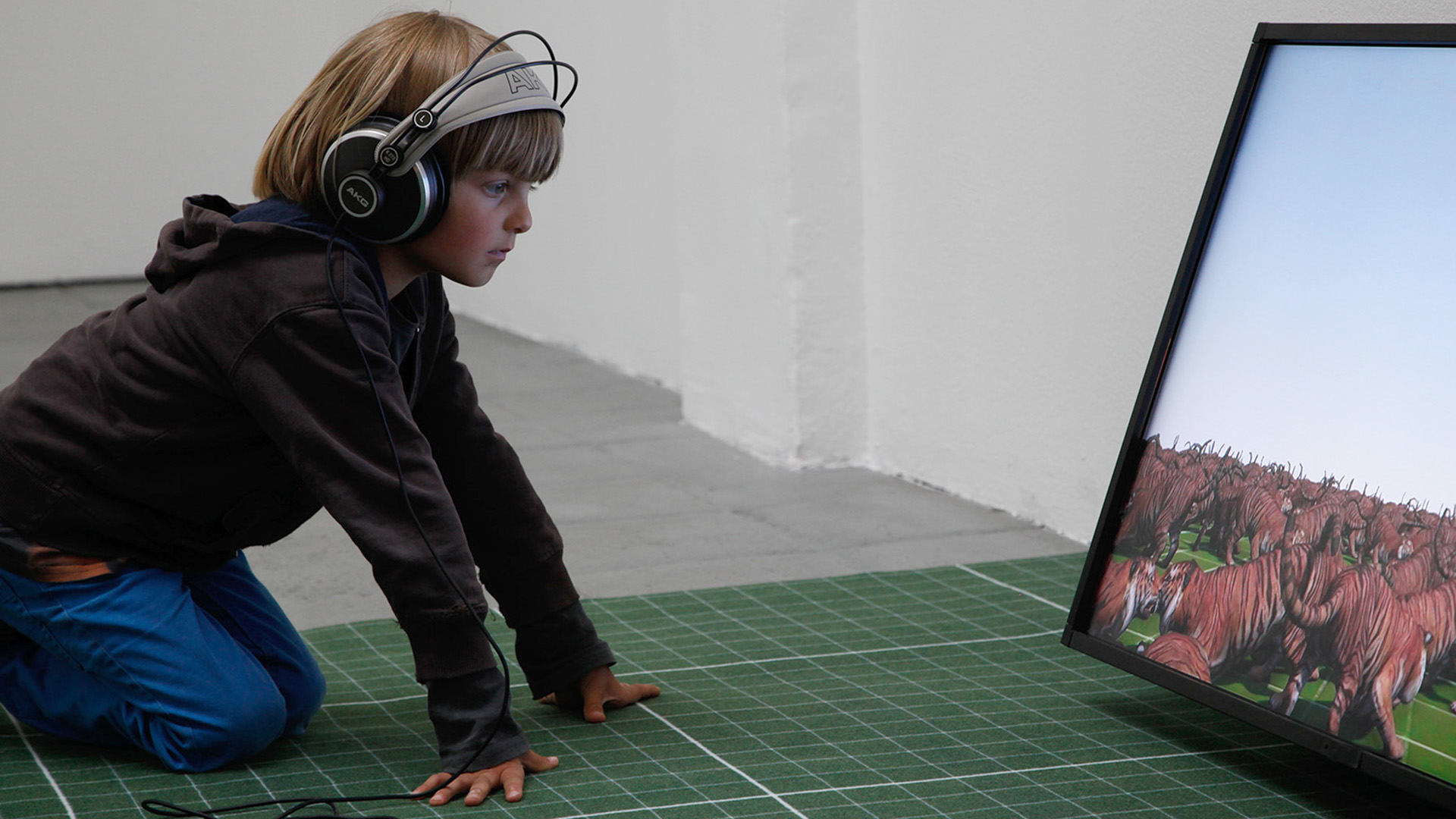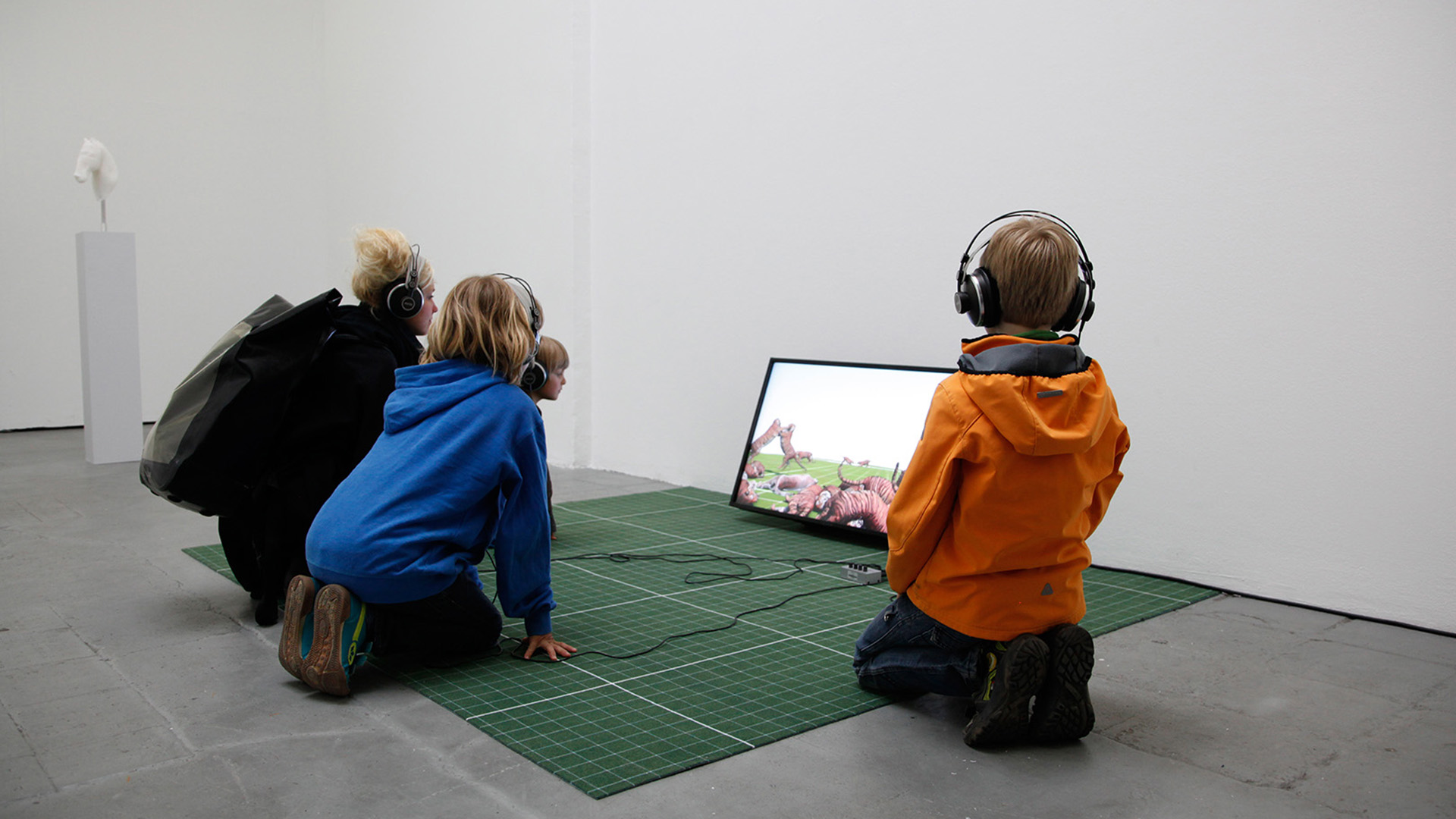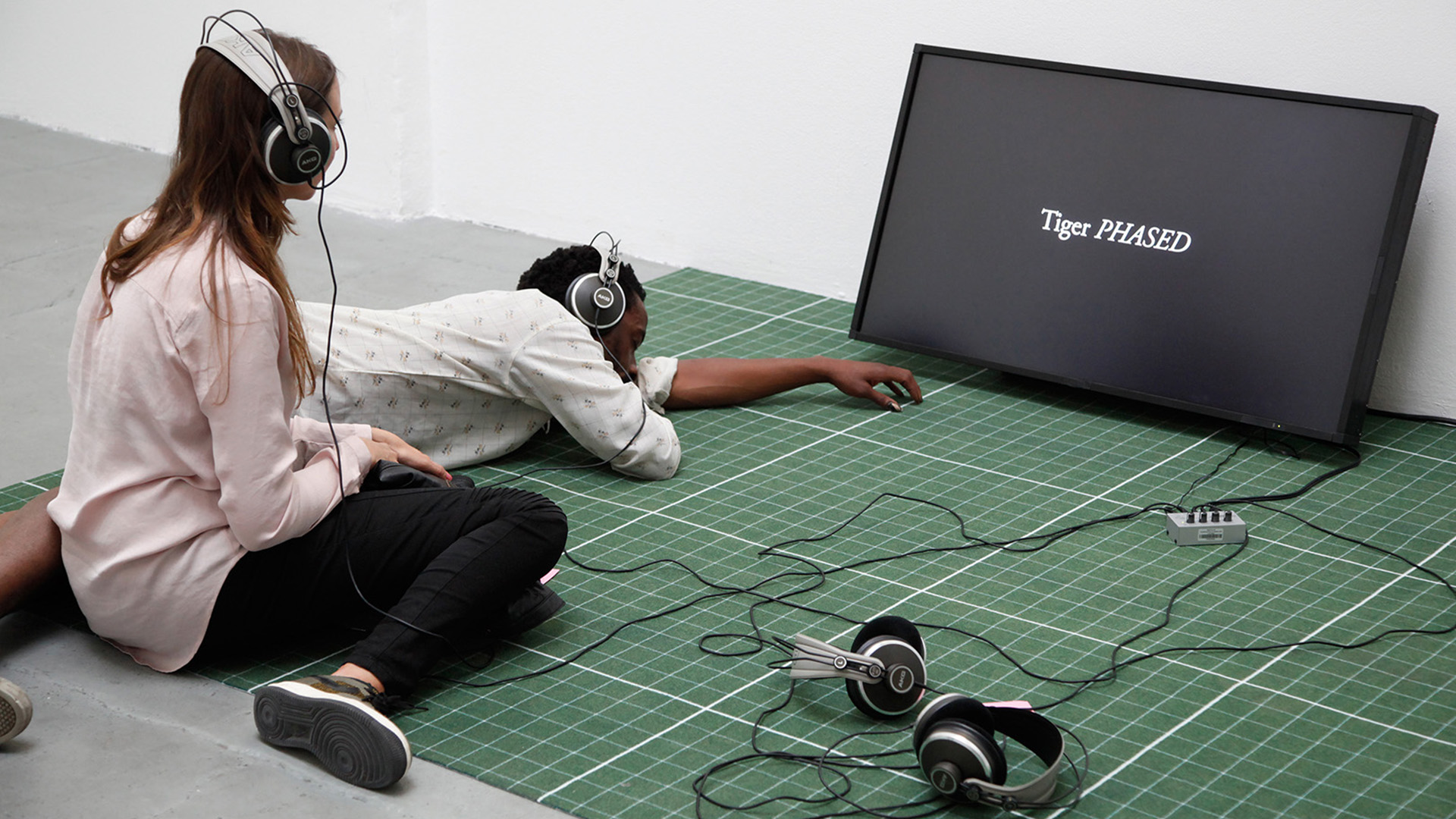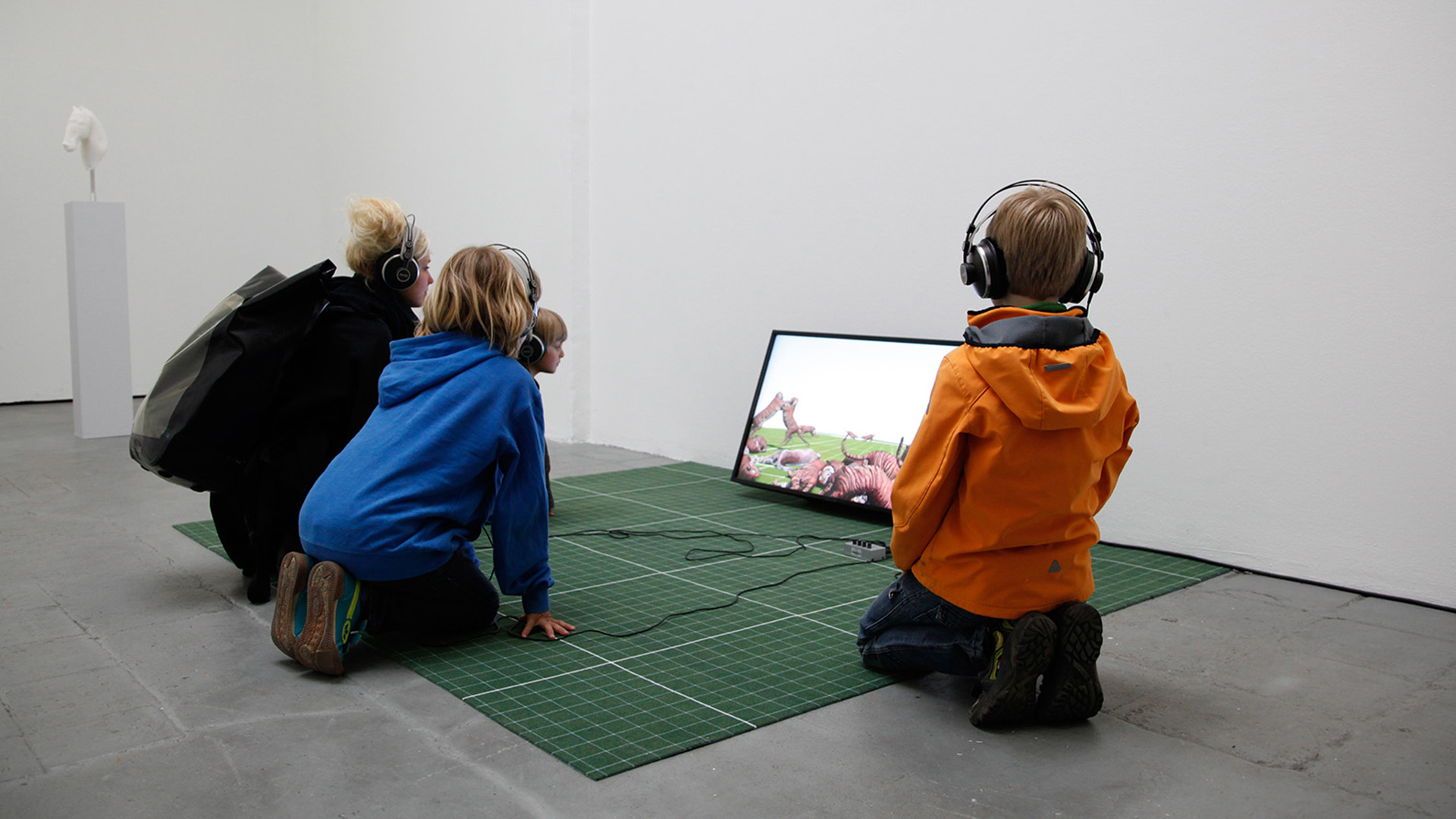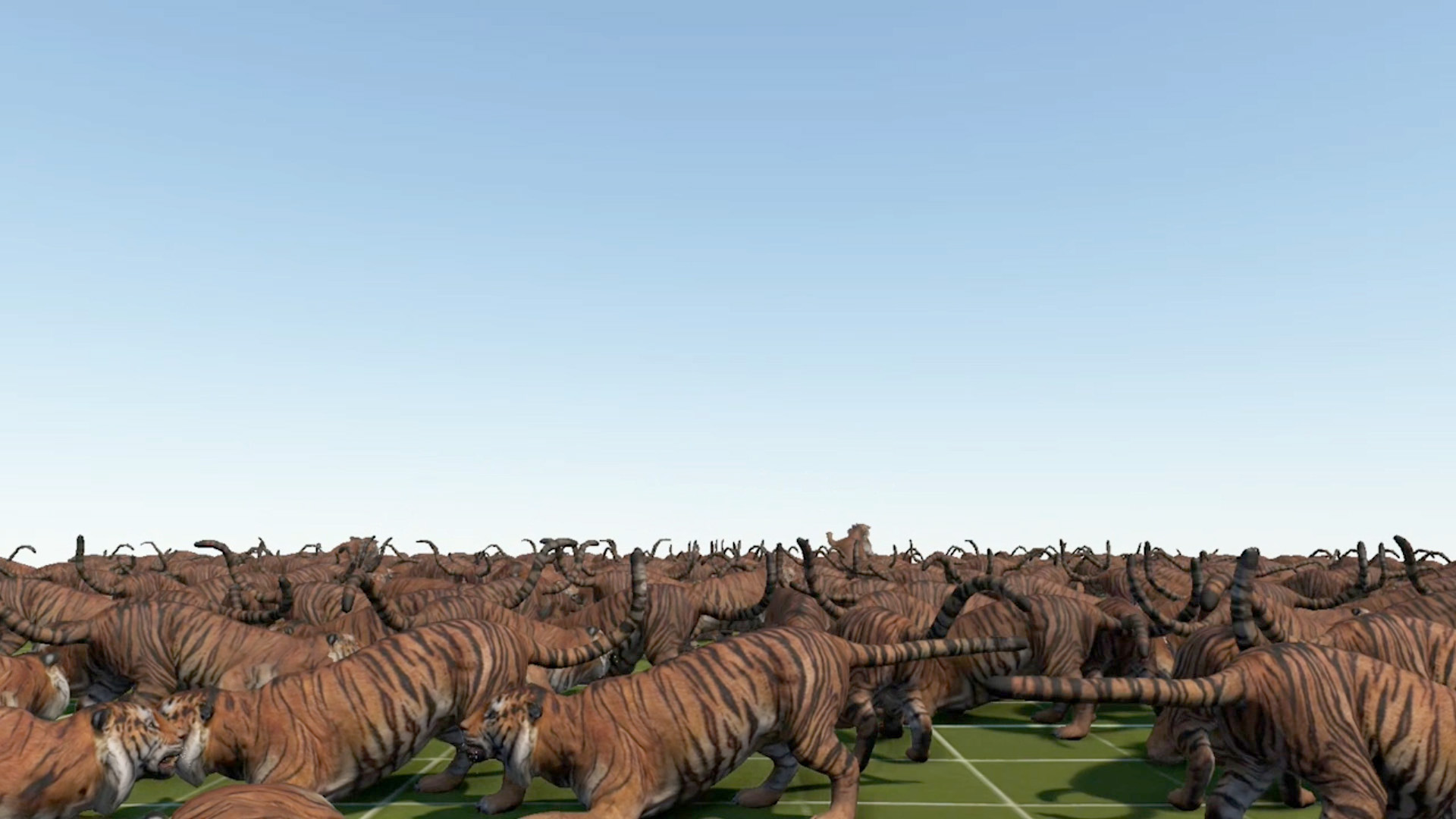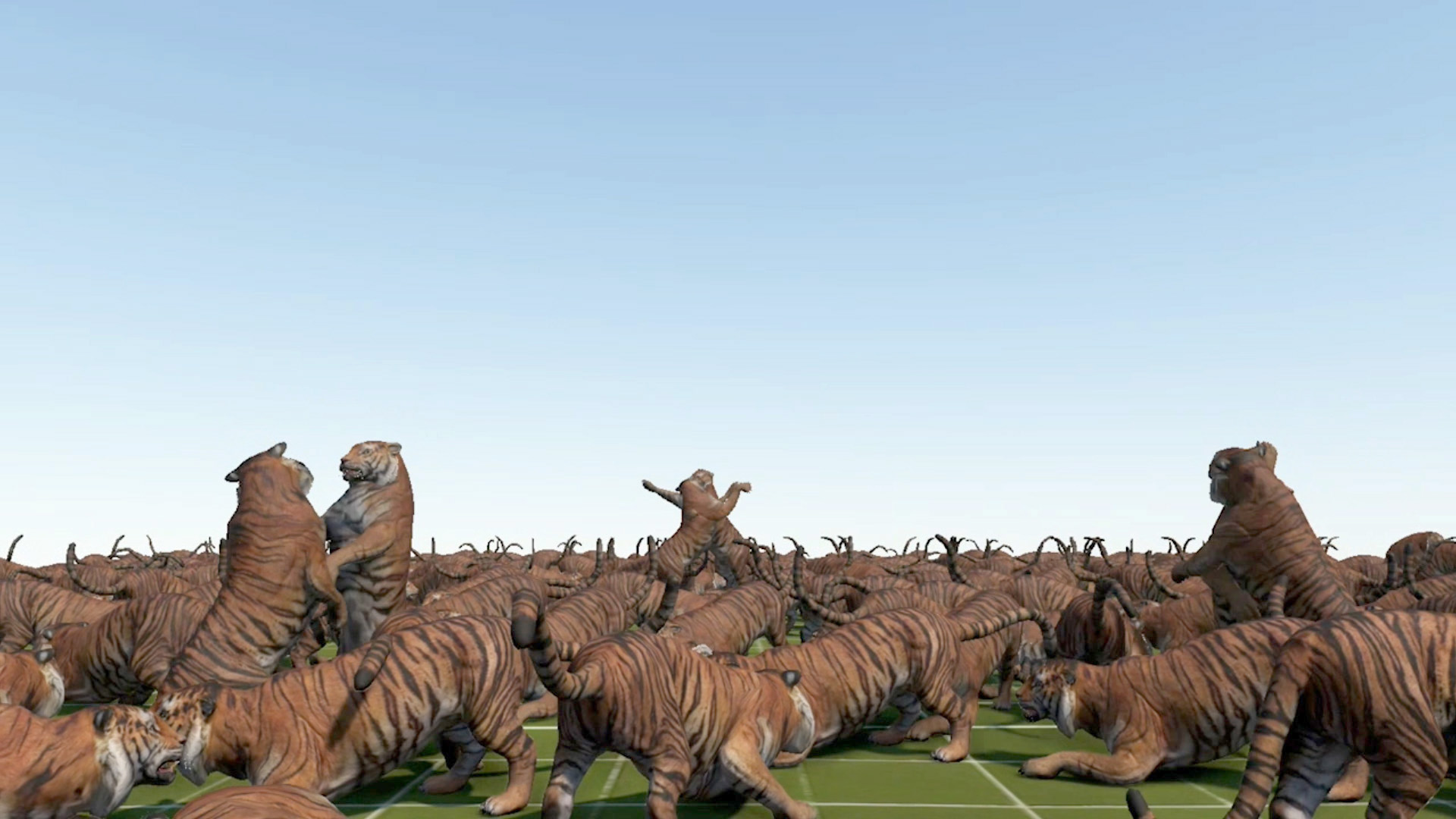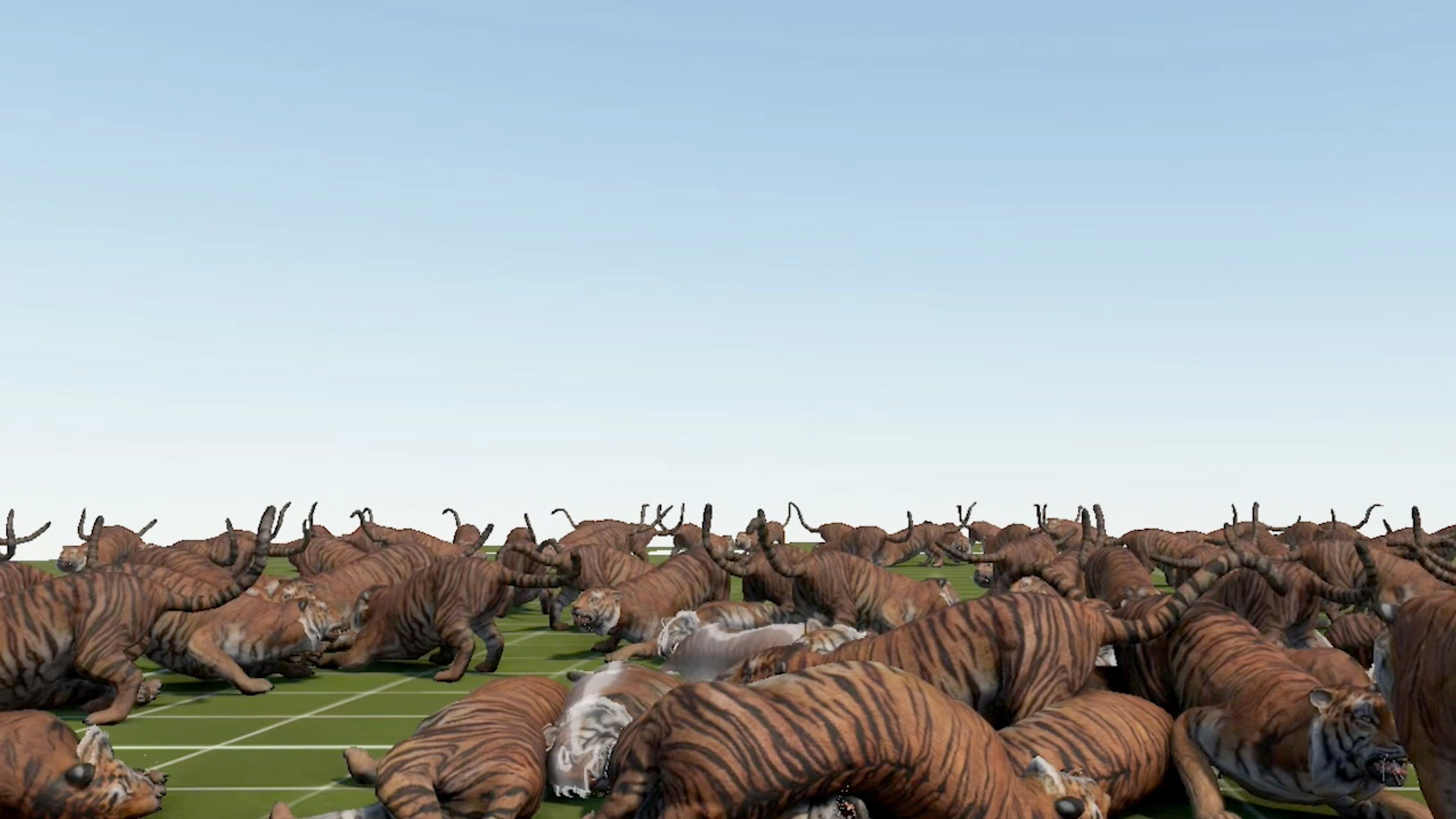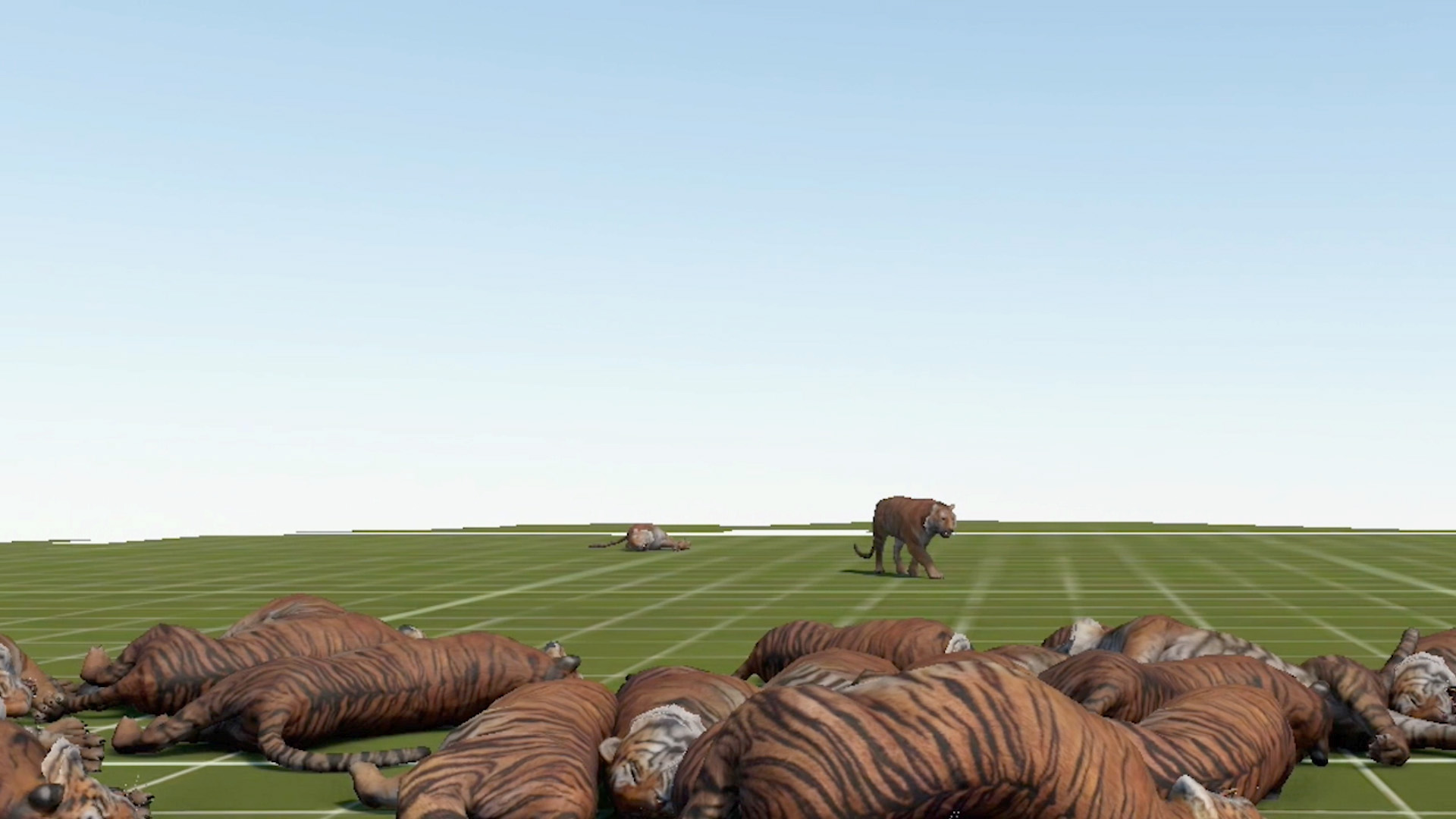Tiger phased
Installation | 250X250 centimeters | carpet, display, headphones
Almost by definition then, for urban individuals, the wild animal is the very embodiment of ‘otherness‘. It is, and in this case somewhat paradoxically, both ‘outside‘ human society, and ‘inside‘ human culture, in the sense that human cultures recognize, categorize and describe such beings. (Gregory S. Szarycz, 2011)
Das Verhalten von Tieren in Computerspielwelten beruht formal auf menschlichen Annahmen, was das Wilde sein könnte. Es sind Repräsentationen einer Vorstellung – die Träume derer, für die das Wilde in einem Fernen, Unbekannten liegt. Tiger PHASED zeigt eine digitale Weite mit 300 künstlichen Intelligenzen im Tigerfell. Mit dem Beginn einer 12-Ton-Abfolge initialisiert sich die Performance in Abwesenheit menschlicher Handlungsmacht. Zu den sich ständig wiederholenden Klängen wechseln die Zustände im Verhalten und durch dieses Zusammenspiel entfalten die Körper die menschliche Annahme. Es gibt sie nicht mehr, die wilden Tiere. Das Wilde ist nur noch ein leeres Versprechen an uns Nicht-Wilde.
The behaviour of animals in the world of computer games is formally based on human assumptions of what it means to be wild. They are representations of an idea – dreams of individuals for whom being wild is something remote and unknown. Tiger PHASED shows a digital expanse with 300 artificial intelligent agents in tiger skins. The performance that takes place in the absence of human intervention is initialised when a 12-tone sequence begins. In addition to constantly repeating tones the states of behaviour change and this interaction causes the bodies to unfold the human assumption. They no longer exist, the wild animals. The state of being wild is nothing other than an empty promise to us who are not wild.
